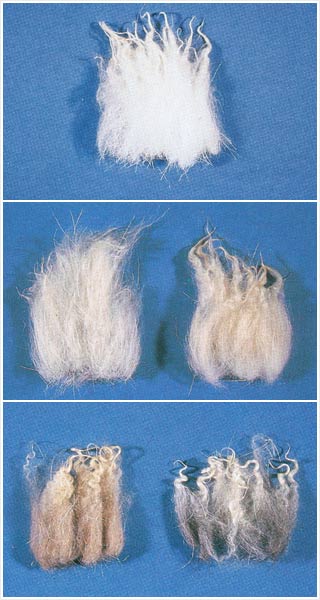Is Cashmere a Natural Fiber? Exploring Its Pure Origins and Uses
Is Cashmere a Natural Fiber? Exploring Its Pure Origins and Uses
Blog Article
Comprehending the Various Sorts Of Cashmere a Natural Fiber and Their Distinct Advantages

The Beginnings of Cashmere: A Historical Review
While the extravagant touch of cashmere continues to appeal modern consumers, its beginnings map back to the harsh, cold climates of Mongolia and the Himalayas. For centuries, the native peoples of these regions have been raising Capra Hircus goats, the prime resource of cashmere woollen. These goats, resilient versus the extreme winters, expanded a great undercoat to endure, which later on came to be recognized as cashmere.

The Production Process: From Goat to Garment
Shearing a Capra Hircus goat notes the inception of the complex cashmere manufacturing procedure. This fragile treatment usually takes place annually throughout springtime. The penalty, soft undercoat is then separated from the coarser outer hair, a process called dehairing. The resultant raw cashmere is then washed to remove pollutants such as oil, dirt, and vegetable issue.
The tidy fiber goes through dyeing, spinning, and weaving, or knitting, to change it right into a fabric. Facility treatments such as quality assurance checks and completing processes adhere to, ensuring the end item maintains the lavish criterion anticipated of cashmere. This painstaking procedure, from goat to garment, justifies the high expense affixed to cashmere products, making them an icon of luxury and improvement.
The Different Sorts Of Cashmere: An In-depth Analysis

The Distinct Benefits of Cashmere: Comfort and Sustainability
Moving from the range of cashmere kinds to the benefits they offer, comfort and sustainability attract attention plainly. Cashmere, an all-natural fiber, is renowned for its exceptional soft qualities, giving a degree of convenience that artificial fibers can't match. The material's agility, yet outstanding heat retention, makes it ideal for all seasons. Furthermore, cashmere's natural elasticity enables it to return to its original form, making it immune to diminishing or stretching.
When it concerns sustainability, cashmere is biodegradable and renewable, as it's collected from cashmere goats who regrow their layers yearly. what is cashmere. Unlike synthetic fibers which can take hundreds of years to decay, cashmere's influence on the environment is very little. This combination of convenience and sustainability makes cashmere a beneficial choice for aware consumers

Taking Care Of Your Cashmere: Maintenance and Conservation Tips
While cashmere is undoubtedly a lavish and lasting option, it calls for certain like keep its quality and extend its life-span. To start, cashmere must be hand washed making use of chilly water and a light detergent. Avoid wringing the garment or twisting as it can damage the fibers. Rather, carefully squeeze out excess water and lay it level on a towel to completely dry. Moreover, cashmere items must be saved in a dry and great place, far from direct sunlight and dampness. Using moth repellents can safeguard these garments from potential damages. It's advisable to prevent hanging cashmere to stop extending. Instead, fold and store them appropriately to keep their shape and high quality in time.
Purchasing Cashmere: Recognizing Its Worth and Worth
Although cashmere might at first look like a pricey investment, its long-lasting value and worth come to be noticeable when you consider its amazing high qualities. Known for its exceptional softness and warmth, cashmere is a costs natural fiber that surpasses other products. Its high need and minimal supply contribute to its high cost, however its sturdiness ensures it lasts for years, using exceptional value for cash. Cashmere pieces are ageless, typically becoming antiques passed down with generations. what is cashmere. Moreover, its all-natural insulating homes offer heat without the bulk of artificial fibers. Buying cashmere, consequently, is not practically current style fads, however concerning welcoming a sustainable, resilient, and elegant lifestyle.
Conclusion
In summary, the sort of cashmere one chooses, be it Mongolian, Chinese, or what material is cashmere Italian, is determined by specific choices for heat, spending plan, high-end, and sustainability. The worth of cashmere expands beyond its cost, with convenience and long life including in its worth. Appropriate treatment and maintenance can ensure its conservation. Recognizing the beginnings, production procedure, and one-of-a-kind advantages of different types of cashmere can guide customers in their financial investment in this luxurious all-natural fiber.
Whether it's the exceptional warmth of Mongolian cashmere, the price of Chinese cashmere, or the eco-conscious production of Italian cashmere, there's a tale to be discovered behind each fiber kind. Cashmere, a natural fiber, is renowned for its unparalleled soft qualities, supplying a level of convenience that artificial fibers can't match.When it comes to sustainability, cashmere is biodegradable and eco-friendly, as it's collected from cashmere goats who regrow their layers yearly. Known for its unparalleled gentleness and heat, cashmere is a costs all-natural fiber that surpasses various other materials. Recognizing the origins, manufacturing process, and special benefits of various types of cashmere can assist customers in their financial investment in this lavish natural fiber.
Report this page